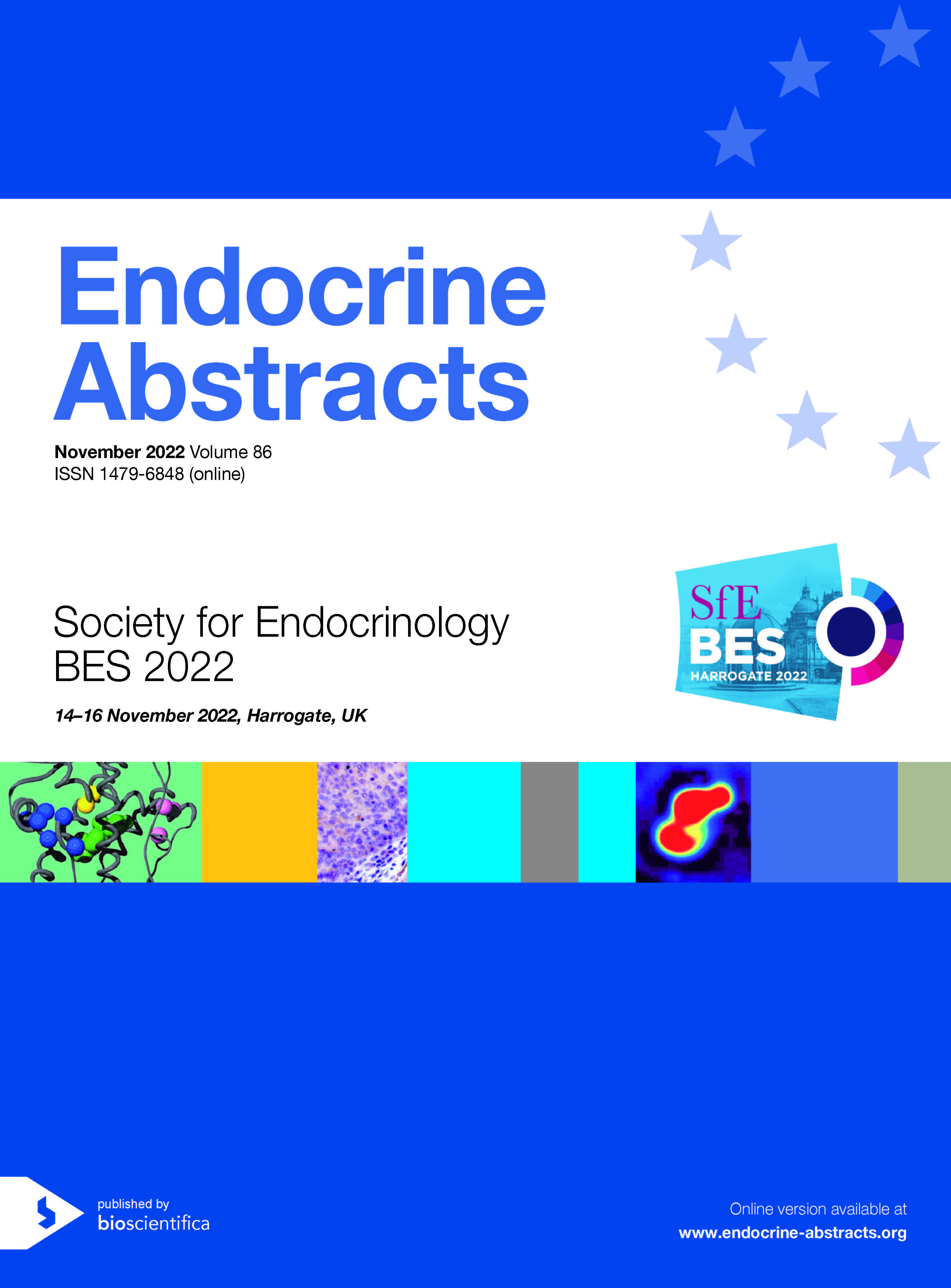
Society for Endocrinology BES 2022
Harrogate,
United Kingdom
14 Nov 2022 - 16 Nov 2022

Oral Communications
Endocrine Cancer and Late Effects
ea0086oc2.1 | Endocrine Cancer and Late Effects | SFEBES2022
Generation of conditional MEN1 knockout human induced pluripotent stem cells (iPSCs) provide a genetically-tractable disease model to investigate cell-type specific gene function
Dissanayake Kumara , Poland Conor , Gierlinski Marek , Davidson Lindsay , Newey Paul
ea0086oc2.2 | Endocrine Cancer and Late Effects | SFEBES2022
Promotion of thyroid cancer cell migration and invasion by the proto-oncogene PBF is mediated by FGD1 and N-WASP
Manivannan Selvambigai , Alshahrani Mohammed , Thornton Caitlin EM , Raja Saroop , Kocbiyik Merve , Zha Ling , Brookes Katie , Nieto Hannah R , Read Martin L , McCabe Christopher J , Smith Vicki E
ea0086oc2.3 | Endocrine Cancer and Late Effects | SFEBES2022
Identification of five prolactin receptor variants with diverse effects on receptor signalling
Gorvin Caroline , Newey Paul , Thakker Rajesh
ea0086oc2.4 | Endocrine Cancer and Late Effects | SFEBES2022
Delta-like non-canonical Notch ligand 1 (DLK1) – a novel biomarker in adrenocortical carcinoma
Pittaway James , Mariniello Katia , Altieri Barbara , Sbiera Iuliu , Sbiera Silviu , Chung Teng-Teng , Abdel-Azziz Tarek , DiMarco Aimee , Palazzo Fausto , Akker Scott A. , Landwehr Laura-Sophie , Ronchi Cristina , Parvanta Laila , Drake William , Kroiss Matthias , Fassnacht Martin , Guasti Leonardo
ea0086oc2.5 | Endocrine Cancer and Late Effects | SFEBES2022
Plasma metabolites correlate with disease in sdhx deficient cancer syndromes
Cole Yasemin , Abramovich Ifat , Fernandes-Garcia Jonatan , Docquier France , MacFarlane James , Challis Ben , Maher Eamonn , Gottlieb Eyal , Casey Ruth
ea0086oc2.6 | Endocrine Cancer and Late Effects | SFEBES2022
Repurposing disulfiram as a therapeutic agent to enhance sodium iodide symporter activity in radioiodide therapy
Read Martin , Brookes Katie , Zha Ling , Kim Jana , Moolla Mehjabi , Kocbiyik Merve , Manivannan Selvambigai , Hoare Rachel , Kannappan Vinodh , Wang Weiguang , Sunassee Kavitha , Blower Philip , Nieto Hannah , Smith Vicki , McCabe Christopher



